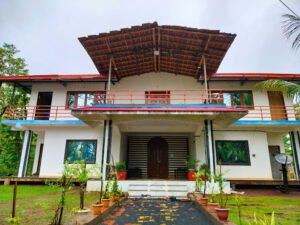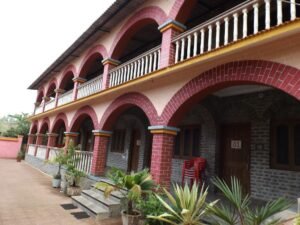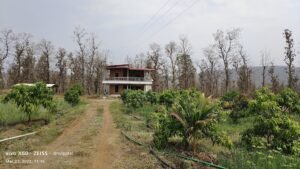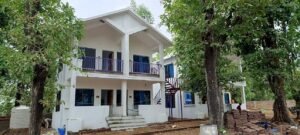India is home to nearly 10% of its population belonging to tribal communities, each with distinctive cultures, languages, and environments. While many safest tribal areas for tourism in India offer extraordinary travel experiences, choosing the safest ones – where infrastructure, community involvement, and sustainable practices coexist – is essential for memorable and responsible travel. Below are ten tribal destinations ranked for both richness of culture and traveler safety.
Table of Contents
1. Dhudmaras, Bastar (Chhattisgarh)
A UN-recognized tribal tourism village powered by sustainable design and community engagement. Over the past few years, local infrastructure has been upgraded precisely to enhance safety and comfort: solar street lights, dual pump water systems, and community-run homestays. Most importantly, the tribal Muria, Maria, and Gond communities now manage adventure activities like bamboo rafting and kayaking on the Kanger river, making it extremely community-led and visitor-friendly.
- Best time to visit: November–February
- Approx costs: Homestay ₹800–1,200/night; activities ₹200–400.
2. Madla Village, near Panna Tiger Reserve (Madhya Pradesh)
Recognized by the UNWTO as a “Best Upgrade” tourism village, Madla offers tribal-run homestays with Bundelkhandi cuisine, folk art, and dance. Its proximity to Panna Tiger Reserve ensures structured tourism with trained local hosts and guided safaris. Village infrastructure and tourism management are community owned, encouraging safety and cultural immersion.
- Best window: November–March
- Estimate: Homestay ₹1,000–1,500/night; village meals ₹200–300.
3. Sasatgre Village, West Garo Hills (Meghalaya)
Perched near the Nokrek Biosphere Reserve, Sasatgre is managed under a tribal community reserve system. Homes built from bamboo and traditional materials function as eco-homestays run by locals. Well-defined walking trails, traditional building norms, and community forest stewardship offer secure, respectful visits. Its approach earned the Silver Responsible Tourism Award in 2023.
- Best season: December–February (cool and pleasant)
- Costs: Homestay ₹900–1,300/night; nature walks ₹150–250.
4. Jotsoma Village, Kohima (Nagaland)
Set in the Angami Naga tribal region, Jotsoma has embraced eco-tourism with forest walks, birding, and hillside views. Community-run eco-lodges ensure safe facilities with do’s/dont’s and secure village circuits. Safety rating data for Nagaland assigns it an 8/10 for general tourist safety in populated rural zones.
- Ideal time: November–March
- Approx. cost: Lodge ₹1,200–1,800/night; guided hillwalk ₹300.
5. Vijaynagar / Namdapha Corridor (Arunachal Pradesh)
Located near Namdapha National Park, Vijaynagar is inhabited by the Yobin/Lisu tribe. The region is remarkably secure due to environment-controlled access—tourists require an ILP and Foreigners a PAP. Villages offer homestays, eco-trekking, and wildlife observation with local guides trained in hospitality.
- Best travel period: October–March
- Expectations: Permits ₹100–500; Homestay ₹1,500–2,000/night; guide ₹500/day.
6. Kisama Heritage Village & Surrounding Areas (Nagaland)
Near Kohima, Kisama is a cultural hub managed by the state tourism board and tribal councils—widely known for the Hornbill Festival. Safe infrastructure, traditional artistry, and curated cultural events make it an ideal first-step exposure into tribal Nagaland.
- Best time: December (Hornbill Festival), or October–March
- Expenses: Festival entry ₹150–200; simple homestays ₹900–1,500.
7. Koraput District (Odisha)
Part of the Eastern Ghats, Koraput is home to Paroja, Bonda, and other tribes. It’s now promoted under Odisha’s sustainable tourism circuits, offering guided monsoon treks, indigenous craft markets, and forest walks under departmental presence. Known for peaceful tribal interactions and consistent visitor feedback on safe experiences.
- Optimal season: Monsoon onwards to January
- Pricing: Homestay ₹700–1,200/night; guided treks ₹300–500.
8. Dangs District (Gujarat)
Bhils, Warlis, and Dangi tribes dominate this forested region which offers tribal tourism via government-supported camps and village stays. Regular cultural programs, UNESCO-protected forest zoning, and forest department oversight ensure tours are well-regulated and safe. Dangs’ nature festivals like Dang Darbar attract mainstream tourists in safe village circuits.
- Ideal months: December–February
- Cost guide: Tent stay ₹800–1,500; folk performance ₹250–400 per person.
9. Hoshangabad and Harda Region (Madhya Pradesh)
This region lies within the heartland of Gond and Korku tribes. Governed and recognized by Madhya Pradesh’s Tribal Tourism Mission, over a dozen villages now offer homestays and cultural immersion tours – complete with livestock festivals (Pola), craft workshops, and agritourism. Structured oversight and safety training are in place across these villages.
- Best travel window: September–March
- Rates: Village homestay or farm stay ₹700–1,100; Pola festival participation free/nilai.
10. Wayanad Tribal Zones (Kerala)
Home to Kurichiyas, Paniyas, and Adiyas, Wayanad offers forest experience stays with tribal guides, spice farm visits, heritage walks, and cooking sessions. Tourism is coordinated via the Kerala Tribal Development Department – ensuring safe stays, permitted homestays, and guided interactions. Recognized for humane, eco-sensitive tourism in India.
- Season to choose: November–March
- Cost estimates: Homestay ₹1,000–1,800; guide-led forest trek ₹250–400.
Safety & Access Summary Table
| Tribal Area | State | Safety & Oversight | Permits | Cost Range (per night) |
|---|---|---|---|---|
| Dhudmaras | Chhattisgarh | UN-awarded sustainable village | None | ₹800–1,200 |
| Madla Village | MP | UN recognized, Panna Tiger proximity | Yes (reserve) | ₹1,000–1,500 |
| Sasatgre | Meghalaya | Community reserve, award-winning | ILP for foreigners | ₹900–1,300 |
| Jotsoma & Kisama | Nagaland | Eco-lodges, festival framework | None (domestic) | ₹900–1,800 |
| Vijaynagar | Arunachal Pradesh | Forestry permits, remote eco stays | ILP/PAP required | ₹1,500–2,000 |
| Koraput | Odisha | Dept-run circuits, guided treks | None | ₹700–1,200 |
| Dangs | Gujarat | Tribal festivals, forest camps | None | ₹800–1,500 |
| Hoshangabad/Harda | MP | Tribal tourism mission | None | ₹700–1,100 |
| Wayanad Tribal Zones | Kerala | Govt-approved guides and homestays | Possibly none | ₹1,000–1,800 |
Visitor Tips for Safest Tribal Areas for Tourism
- Season & Weather: Visit between November–March for most zones, or post-monsoon where applicable.
- Local Permits: Arunachal requires ILP/PAP; some Nagaland border zones may require IDs.
- Accommodations: Homestays recommended; avoid informal or unregistered lodging.
- Guided Immersion: Always opt for village-approved guides to ensure respectful engagement.
- Cultural Respect: Follow local norms – ask before photographing, avoid entering sacred spaces without permission.
- Low Impact Travel: Carry refillable water bottles, avoid plastic, and favor locally made goods.
- Health & Safety: Carry basic medication, insect repellent, and check if areas need vaccine advisories.
- Insurance & Travel Advisory: Always have travel insurance; review any region-specific advisory before booking.
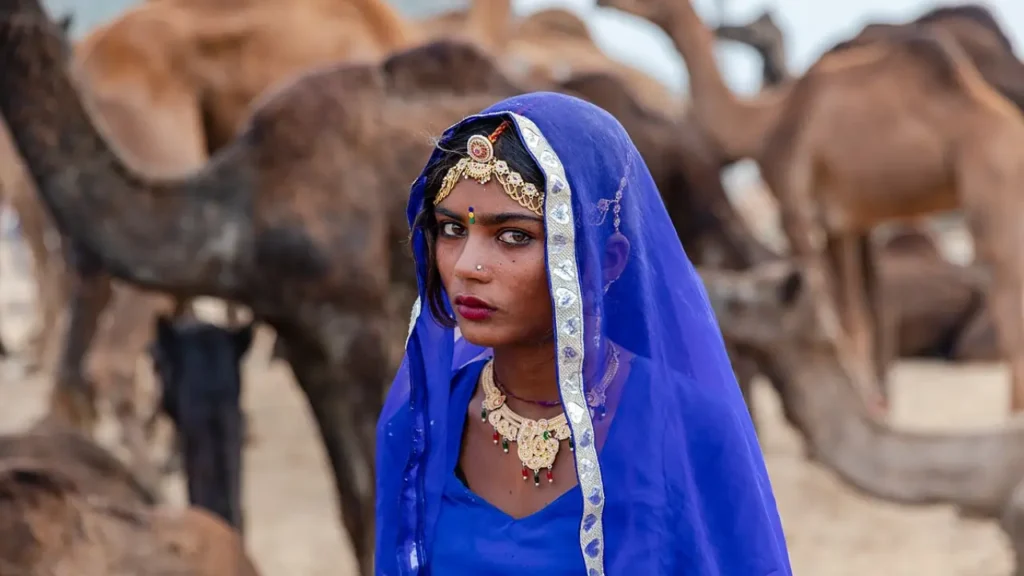
Conclusion
These 10 tribal destinations represent some of the safest and most enriching experiences across India. From solar-lit Dhudmaras to Panna-adjacent Madla, meandering Wayanad forests, and remote Arunachal valleys, each offers a unique glimpse into tribal life under structured, secure conditions. By choosing places with community oversight, visitor training, and tourism guided by both tradition and regulation, travelers can create deep connections while respecting the integrity of indigenous cultures. Let every visit be an act of curiosity, respect, and shared growth.

